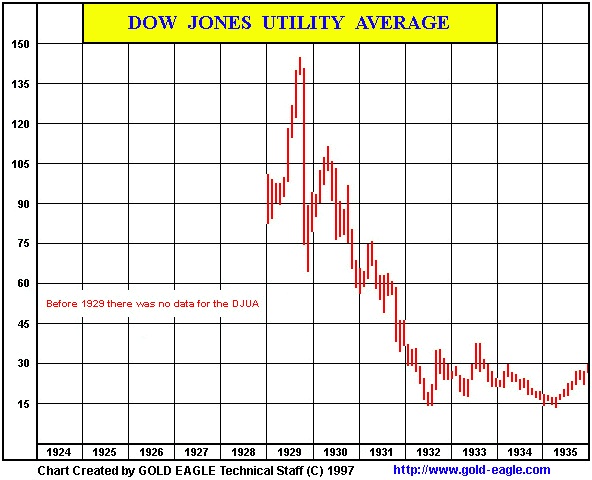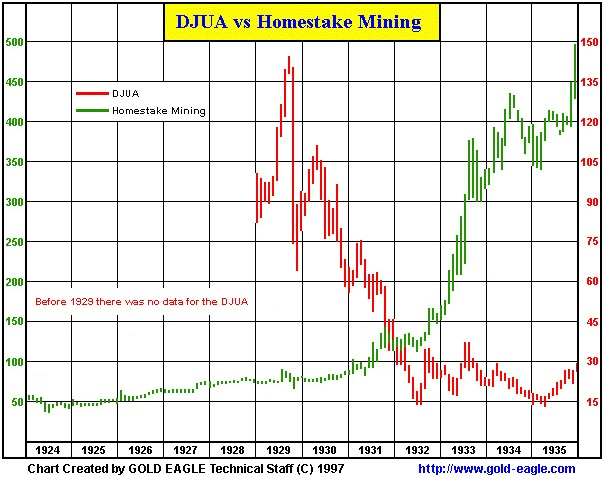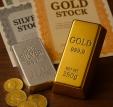1998/99 Prognosis Based Upon 1929 Market Autopsy
The venerable Winston Churchill once observed, "The farther back one looks, the further in the future one may see." On the other hand a sage saw of Wall Street asserts "History repeats, and history doesn't repeat… with equal frequency.
Nonetheless, Nobel Laureate in Economics, Dr. Milton Friedman contends "We learn from history that we do not learn from history."
BUT, if history is indeed prologue…
Comparative Market Valuations
By all traditional valuation methods the stock market as reflected by the Dow Jones Industrial Average (DOW) has reached outrageously high levels - unprecedented in over 200 years of Wall Street history. Recently, the Price Earnings Ratio hit 28 TIMES, Dividend Yields were a very miserly 1.3%, and Market Price to Book an astronomical 6 TIMES.
Compare today's unbridled optimism with 1929. Immediately prior to the Crash of 1929 the P.E.R. stood at only 16 Times, Dividend Yields cruised at about 2.9%, and Market Price was topping at 2 Times Book. Clearly, by any reasonable valuation standards - and however RATIONALIZED, today's DOW all-time record levels do NOT reflect the earnings and growth potential, but blatantly exude'EXTRAORDINARY POPULAR DELUSIONS AND THE MADNESS OF CROWDS.' A Bubble begging to burst…similar to 1929 in the US, and not unlike Japan in1989 when the Nikkei reached its lofty peak of 40,000 - only to relentlessly decline during the next 9 years through today, where it threatens to plunge below the all crucial 15000 level - when the Nippon banking system heralds looming insolvency.
1929 Aftermath for Stocks and Gold Mining Companies
All market students are more or less familiar with the 1929 Stock Market CRASH. Nevertheless, the DOW chart below again brings into sharp focus its historic performance from 1924 to 1935. Irrational Exuberance caused the DOW to appreciate more than 275% from 1924 to 1929 (contrast this with the DOW's increased value of nearly 230% recently during an equal time period).
From October 1929 through 1935 the world suffered through the worst period of DEFLATION known heretofore. As readily seen the DOW was devastated.Stocks plunged more than 89% within three years from the 1929 peak - finally bottoming in 1932 at about the 40 level.

During the same period the supposedly "safe-stocks" - the UTILITIES - as measured by the Dow Jones Utility Average (DJUA) also plummeted 89% in sympathy with the DOW - reaching its nadir in 1932 - where it continued to grovel near its lows for the next three years. In fact ALL market sectors and industries were mercilessly decimated during the Great Depression… that is all EXCEPT one.

Contrary to many present day market analysts' unfounded beliefs, there was indeed ONE SECTOR which was spared the grinding deflation of market values during the Great Crash and aftermath: GOLD MINING STOCKS.
Due to an acute dearth of accurate and complete records for this period covering gold mining stocks, this writer was obliged to use Homestake Mining as a proxy for the entire gold mining industry. One may appreciate from the chart below the contra-cyclic price trend of gold mining stocks vis-à-vis the overall stock market during the 1929-1935 period.

Gold Stocks did well during the Great Crash and aftermath… indeed exceedingly well. Please note that from August through October 1929 Homestake Mining did decline in value, but no where near the percent plunge in the general stock market. And by yearend Homestake was again creeping up in price. For the first few months of 1930 the gold mining industry proxy was relatively flat. However, from mid-year on Homestake began to increase in value as the DOW and DJUA rapidly and relentlessly melted away. During the next five years the Gold Mining Industry's surrogate soared in value - while stock prices were decimated by the Great Depression.
It is relevant to observe that Homestake's price appreciation was not a market anomaly, but was consistent with its growing annual earnings per share and increasing cash dividend payout. Yearly E.P.S and cash Dividend payout data may be seen in the above Homestake chart. While nearly all industries revenues and earnings dwindled, the gold mining industry thrived. Homestake's E.P.S. increased from $4.19 in 1929 to $32.43 in 1935. During the six desolate years of the Great Depression, the gold mining industry's proxy enjoyed an E.P.S. growth rate of 41% COMPOUNDED ANNUALLY. Furthermore, while the banks paid a paltry 1% in "earned" interest on the meager savings of those few hapless souls who still had money, Homestake share holders were indeed enriching themselves. The 1929 cash dividend of $7.00 increased to a cash payout of $56 PER SHARE BY 1935. Consider for a moment the awesome investment significance of it.
Had an investor the foresight and guts to buy a share of Homestake in the throes of the 1929 Crash, he would have gotten it for about $80. During the next six years while stock values worldwide were melting away - and preciously few companies were able to pay even a declining trend of dividends - Homestake soared relentlessly to $495 a share by yearend 1935 - THAT'S NEARLY 520% CAPITAL APPRECIATION (34% compounded yearly increased value). And during the six depression years of international economic suffering, Homestake paid out $128 in cash dividends. In 1935 alone, the gold mining proxy paid a $56 cash dividend per share - which represented 70% of the 1929 Crash Price of the stock!
Many market analysts and financial students erroneously suggest that US president, Franklin Delano Roosevelt's action of increasing gold's value in 1934 from $20.67 to $35 an ounce was the prime reason for Homestake's stellar performance during the Great Depression. NOT SO. Please observe the Homestake chart again. Homestake's stock price was rising strongly much before FDR's decision to stimulate fallen commodity prices by increasing gold's value. Nevertheless, gold's price hike did indeed add more impetus to Homestake's dynamic performance, while world economies continued to struggle in the morass of deflation.
To put the relative market performances of the stock market vis-à-vis gold mining shares into proper perspective, please view the following two charts superimposing the DOW with Homestake and the DJUA with Homestake. There is absolutely no room for mis-intepretation - THE ONLY PLACE TO BE IN DEFLATION WAS IN GOLD STOCKS.


WHY GOLD STOCKS ROSE IN THE 1930s DEFLATION… and will again
All analysts and economists do not concur on a single definition of "DEFLATION." Some define "DELATION" as simply a continuously declining price level. Consequently, they conclude that a period of deflation is bearish for gold and gold mining stocks. The other school of thought defines "DELATION" as a sustained contraction of credit and money supply. The latter definition was the case in 1929… and at this very moment it appears to be rapidly developing the same scenario again.
There are rationale leading to a logical conclusion that DELATION is indeed bullish for gold mining stocks. The effects of the 1929 CRASH caused a sustained contraction of credit and money supply, which resulted in a growing universal suspicion of institutional credit-worthiness… that eventually extended to governments and to their fiat currencies. As institutional credit-worthiness evaporated, investors fled paper currencies (even US Treasuries), and ran to the only money which was (and remains) NOT a liability of anyone, and therefore not subject to default: GOLD
Presently, the Asian Contagion demonstrates all the earmarks of true DEFLATION. Moreover, there are valid indications the 'Domino Effect' will inevitably spillover into the West, once China devalues the yuan and, consequently, Japan's banking system collapses. These events will necessarily precipitate a true global deflationary credit collapse - as the inter-related banking systems cause the next lower rung on the financial ladder to fail. Subsequently, this will trigger a run to GOLD and gold mining stocks..
1998/99 Prognosis for Stocks and Gold Mining Companies
It is the opinion of this writer that a severe stock market decline is looming… and that GOLD (presently near 18-year lows) and Gold Mining Stocks (currently near multi-year troughs) will be the preferred money shelters - as international investors flee global stock markets to seek safety.
This is what occurred in the aftermath of 1929. This is what may very well happen again…if history is prologue.
Related Studies -
"Per Traditional Valuation Methods: Stocks Are Unprecedently Over-Valued"
https://www.gold-eagle.com/analysis/stocks_over-valued.html
"GOLD STOCKS AND THE GREAT CRASH OF 1929 - REVISITED"

















